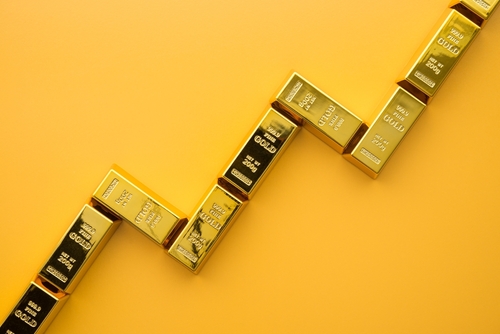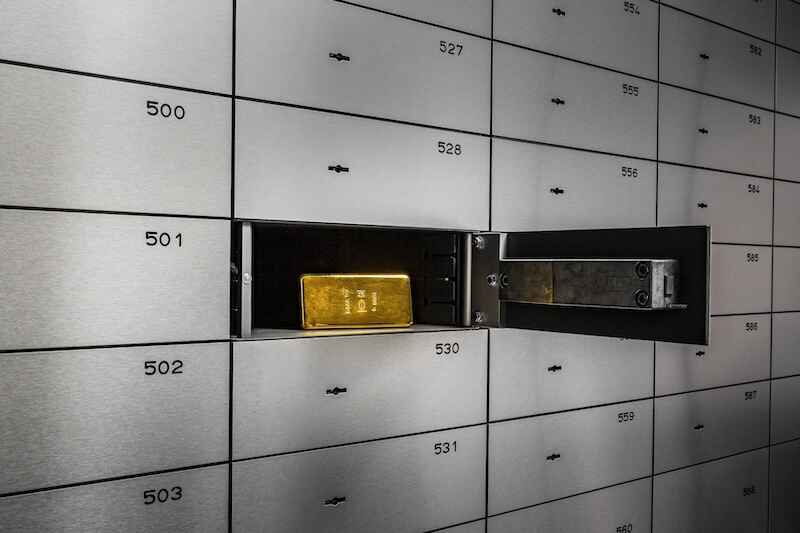Look Who’s Buying Gold
Rich Checkan|May 24, 2023

In just the past six months, gold is up nearly 14%.
That should come as no surprise. Inflation is still well above the Fed’s target rate. Banks are failing… as are many other businesses. Interest rates are the highest they’ve been in nearly 20 years.
With the precious metal on most investors’ radars (and in their portfolios), Reader B.B. asks a very good question…
| I see many mentions of other central banks buying tons of gold. I cannot get an answer to, from who? Who has tons to sell? Where did the new tons of mining come from? Or is it just well-presented, coordinated BS being fed us? Can you offer any insight? |
|
|
Thanks for the question, B.B. It gives me the opportunity to pull back the curtain on the puzzling world of central bank gold buying… and allows me to explain why it is something worth paying attention to.
For the past 13 years, central banks have been net buyers of gold.
In fact, last year, central bank gold buying was at an all-time high. We had not seen buying numbers even close to 2022’s totals since the 1950s and 1960s.
Look at this chart from the World Gold Council…

As a result of this record-setting buying in 2022, most analysts predicted there would be a drop-off in 2023.
They were wrong.
Central bank gold buying in the first quarter of 2023 totaled 228.4 tons. That was 176% more than in the first quarter of 2022, when it came in at 82.7 tons. And it was 34% higher than the previous first quarter record of 170.4 tons, set back in 2013!
This train is not slowing down.
But to the reader’s question… how and where are they getting it?
Big Business
For every buyer, there must be a seller.
One group of sellers central banks use is other banks through over the counter (OTC) purchases. These bullions banks are wholesalers, which means they are large enough to handle the order volume.
Some current and former bullion banks include…
- BNP Paribas
- Citibank
- Credit Suisse
- Goldman Sachs
- HSBC
- ICBC Standard Bank
- JPMorgan Chase
- Merrill Lynch
- Morgan Stanley
- TD Bank
- UBS
- Standard Chartered Bank.
Of these, the dominant bank is JPMorgan Chase.
OTC purchases can also be made through major gold refiners such as MKS PAMP.
The second option available to central banks is the Bank for International Settlements (BIS). BIS is the bank of banks. It’s located in Basel, Switzerland.
The last option available to central banks is to buy homegrown, locally sourced gold. This is often the most cost-effective choice for countries that produce gold. Local gold purchase programs exist in China, Russia, Mongolia and the Philippines.
One famous gold purchase was when the Central Bank of India bought 200 metric tons of gold directly from the International Monetary Fund back in 2009 at roughly $1,050 per ounce.
At the time, I said that was the end of gold going for less than $1,000 per ounce. Fourteen years later, I’ve been proven right.
Regardless of the source, central banks tend to buy “Good Delivery” gold bars. The standards for Good Delivery bars are set by the London Bullion Market Association. These bars must have a minimum purity of 95.5%, and they must weigh between 350 and 430 troy ounces.
Trading Dollars for Gold
As I mentioned, central banks are buying gold like never before.
In the most recent World Gold Council Survey of Central Banks, two primary reasons for this were cited.
- Gold’s performance during times of crisis
- Gold’s role as a long-term store of value
In an environment riddled with geopolitical uncertainty, persistent inflation, recession fears and banking instability… it makes perfect sense.
And that leads to the real reason we’re seeing so many gold purchases…
I absolutely believe the U.S. government’s weaponization of the dollar has driven both enemies and friends to reduce the amount of U.S. dollars they hold in currency reserves.
In place of U.S. dollar reserves, central banks are opting for increased exposure to gold and other currencies… such as the Chinese yuan.
Why? Simple. Either they are currently cut off from the world’s banking system (enemies) or they fear they might be cut off from the world’s banking system in the future (friends).
Central banks are diversifying out of our mismanaged dollar.
When it comes down to it, they’re buying for all the reasons we buy gold ourselves.
Gold is first and foremost a form of wealth insurance.
As I like to tell my clients, gold as wealth insurance is simply a store of purchasing power, with high liquidity, for a potential financial crisis you hope to never have.
That’s why central banks bought gold in record numbers last year. That’s why central banks bought gold in record numbers in the first quarter of this year. And it’s why you should be following their lead.
Given what they know about the state of the world’s financial system – and that they are buying gold in such a robust manner – don’t you think you should be buying as well?
In 2023, there is no better way to keep what’s yours than to buy gold.
If you would like to follow the lead of central banks, a great first step is to get a copy of my FREE special report… “The Top Ten Mistakes First-Time Gold Buyers Make.”
You’ll find out the questions you should ALWAYS ask when buying gold… the benefits of physical gold versus ETFs and mining stocks… common scams to look out for… and more.
Plus, you’ll receive regular commentary on gold, precious metals and the markets from me and my team.




